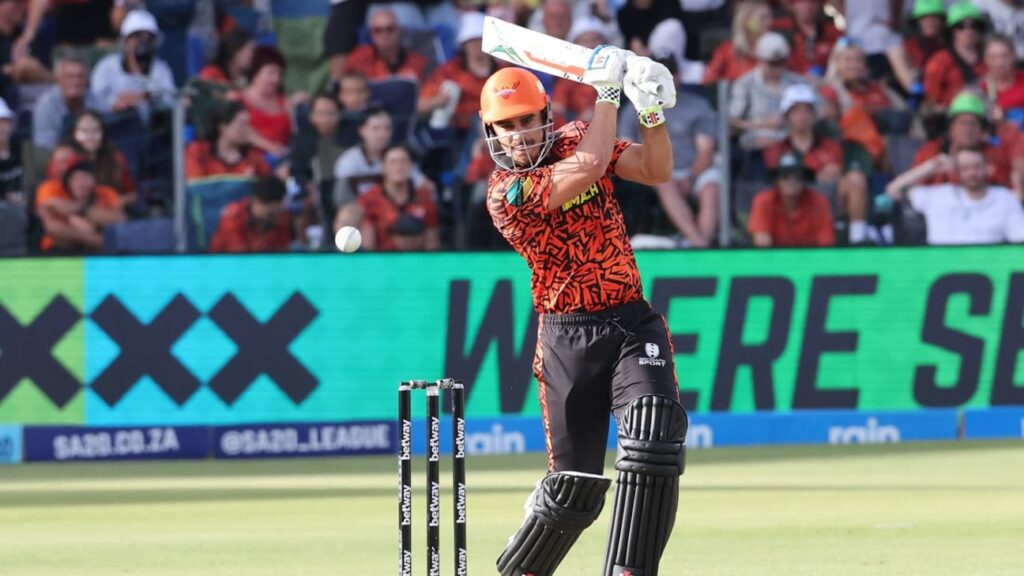One metric that can be used to answer that question is to judge the number of close games, which we’ll define as matches that were won by 10 or fewer runs of with six or fewer balls to spare. In the 30 group stage matches in 2025, there have been six tight matches, including one which was DLS affected. In 2024, there were 10 and 2023, nine. Similarly, this season, the number of matches won by a margin of more than 30 runs or six wickets is 20, the same as last year but seven more matches than the 13 in 2023.
Word from those who have had bat in hand is that pitches are more challenging because they are slower, lower and have turned more than usual. Considering that the competition takes place at the same time – early January to early February – every year, it’s puzzled many that the surfaces are behaving like it’s much later in the summer and explanations have been hard to come by.
Evan Flint, the former head groundsman at both Newlands and the Wanderers, believes the age and continual use of the surfaces across the country is starting to show. “Ideally a pitch should be relaid every 10 to 15 years, however with increasing content it’s impossible to do,” he told ESPNcricinfo “A new pitch takes 12 to 18 months before it can be used again, so this puts too much strain on the other three or four central pitches.”
That could mean that this season proves be an outlier, with the tired surfaces on their last legs, following what has also been a heavy international load. Before the SA20, there were Tests at four of the six venues (last season there were only Tests at two) and white-ball internationals at all six. “A lot of the central pitches were used before the tournament started and used surfaces often get slower over the course of the season,” Flint said.
In addition, heavy rain everywhere except the Western Cape added to the challenges at the start of the competition, especially for inexperienced groundsmen. There is a new curator at Kingsmead, and, since Flint left, fairly new curators at the Wanderers and Newlands, which means that there’s a lot of learning that takes place on the job and occasionally even those who have been around for a long time, don’t get it right. “It’s also a difficult job, so even with all the experience it can sometimes go wrong,” Flint said.
And that just has not worked as well. The 2025 league phase has seen the lowest percentage of runs scored in boundaries: 53.8%. In 2024, almost 60% of runs came in boundaries and in 2023 it was 56.8%. Fleming also mooted the idea that they may be due to when the games are played.
“One of the things I’m learning from being here a few years is that the starting time is a little bit of a challenge,” he said. “A lot of domestic cricket is played through the evening hours where the wickets have played quite well. We’ve found there’s quite a distinct difference between the last part of the day and then moving into the evening, even if the wicket’s dry.”
Most SA20 games start at 5.30pm local time, which is daylight in the Western Cape, where the sun sets at 8pm in peak summer, twilight in Gqeberha and on the Highveld and just about sunset in Durban. That means some matches are played as mostly day games, others as day-night and the rest as night games.
On double header days, the early match is entirely a day game, starting at 1pm, and on Sundays, the matches start at 3.30pm and end just after sunset. Under lights, the ball tends to come on quicker and there perhaps isn’t as much of that as there could be, but match times are set at what’s best for broadcasters, not batters and that may sum up how we should actually measure the SA20.
On screens, it is seen as the tournament with some of the best vibes: the crowds are diverse and engaged and have gotten behind their teams, some of the world’s biggest names have smiles on their faces when they’re playing, and even when they’re losing.
In the aftermath of Capitals’ 95-run defeat in their final game, the players gathered on the outfield with the families and their former captain Wayne Parnell, had a hit about with Parnell’s two young children and looked on as MICT set up a net on the field so they could train for their week in the playoffs.
Capitals felt no need to send either their new coach, Jonathan Trott, or their new captain Kyle Verreynne, to explain their dismal season and instead put up their rookie Keagan Lion-Cachet to the press afterwards. He was all smiles in defeat and “couldn’t have asked for anything else,” other than to be part of the tournament that has brought cricket in South Africa back to life.
“I’ve learned so much more than what I knew in the beginning, and cricket is a game where the more you learn the better you get,” he said. “The more people share their own experiences and skills with you, the more you learn.”
And one thing about the SA20 in its early years, is that it’s a tournament that will keep learning.
Firdose Moonda is ESPNcricinfo’s correspondent for South Africa and women’s cricket
